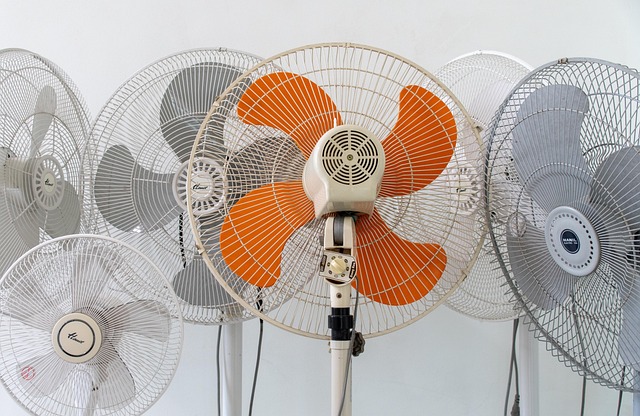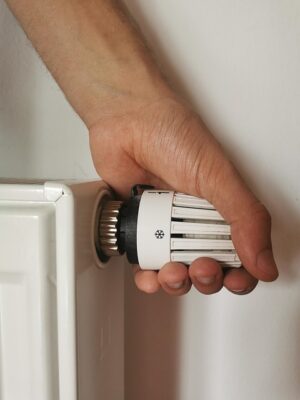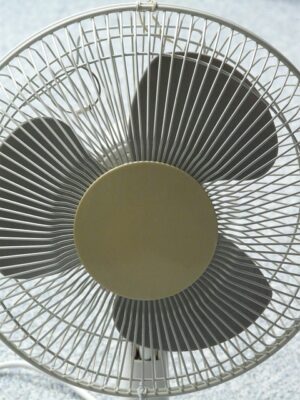Industrial air curtains are advanced, smart devices integrating with building management systems for efficient climate control at large openings in warehouses and factories. They automate entrance heating and HVAC systems, saving energy and enhancing operational cost-effectiveness. These heavy-duty solutions optimize indoor environmental quality, prevent pollutant entry, and enhance worker comfort through real-time temperature and humidity adjustments. Smart sensors and customizable controls enable precise climate management, making them ideal for modern eco-conscious manufacturing facilities. Future developments with AI, IoT, and renewable energy promise even greater efficiency and sustainability in industrial air curtain technology.
“Industrial air curtains, a vital component in enhancing indoor environmental quality, are transforming facility operations. These intelligent systems play a pivotal role in energy efficiency, comfort, and safety. This article delves into the dual evolution of industrial air curtains and smart building management technology, highlighting their symbiotic relationship. By integrating these innovations, facilities can achieve optimal performance, reduced energy costs, and improved occupant comfort. We explore key advantages and glimpse into future prospects, where smart industrial air curtain technology promises even greater efficiency and adaptability.”
- Understanding Industrial Air Curtains: Their Role and Benefits
- The Evolution of Smart Technology in Building Management
- Integrating Industrial Air Curtains with Building Management Systems
- Key Advantages of This Integration for Optimal Facility Operations
- Future Prospects and Innovations in Smart Industrial Air Curtain Technology
Understanding Industrial Air Curtains: Their Role and Benefits

Industrial air curtains are specialized devices designed to create a powerful barrier at large openings in industrial settings, such as warehouse entrance protection or factory entrances. These heavy-duty air barriers play a crucial role in controlling the flow of air and maintaining environmental conditions within buildings. By integrating with building management systems, they offer significant advantages for manufacturing door systems and cold storage facilities.
Beyond mere isolation, industrial air curtains provide efficient industrial climate control by preventing unwanted drafts, temperature loss (or gain), and the entry of external pollutants. They are particularly beneficial at loading docks, ensuring a seamless transition between the outdoor environment and the controlled interior space of factories. Moreover, these large opening protection mechanisms enhance energy efficiency in industrial HVAC systems, contributing to overall operational cost savings for businesses.
The Evolution of Smart Technology in Building Management

The evolution of smart technology in building management has been a game-changer across various industries, including manufacturing and warehousing. The integration of intelligent systems into traditional building infrastructure has led to more efficient and sustainable operations. Smart industrial air curtains are a prime example of this technological advancement, offering advanced solutions for warehouse entrance protection and large opening protection. These cutting-edge devices not only enhance energy efficiency but also contribute to the overall industrial climate control, ensuring optimal working conditions.
Traditionally, manufacturing door systems and cold storage barriers were often manual or rudimentary in nature, leading to inefficiencies and higher operational costs. With smart air curtains, such as heavy duty air curtains and loading dock air curtains, facilities can now automate processes related to factory entrance heating and industrial HVAC (heating, ventilation, and air conditioning) systems. This automation not only saves time but also minimizes energy wastage, making it an ideal solution for modern, eco-conscious factories.
Integrating Industrial Air Curtains with Building Management Systems

Integrating industrial air curtains with building management systems represents a significant leap forward in efficient and sustainable facility operations. These smart curtains are designed to regulate temperature, control humidity, and enhance overall indoor environmental quality while providing robust protection for warehouse entrances, loading docks, and other large openings. By seamlessly integrating with existing HVAC systems, industrial air barriers can optimize energy use, reduce operational costs, and improve worker comfort in manufacturing facilities, cold storage areas, and other critical environments.
Industrial air curtains, including heavy-duty models suitable for harsh conditions, offer advanced features like remote monitoring and customizable control settings. This integration allows building management systems to automate curtain operation based on real-time environmental data, ensuring optimal performance. For instance, factory entrance heating can be adjusted dynamically to meet varying outdoor conditions, maintaining a comfortable indoor climate while minimizing energy wastage. Such smart solutions are pivotal in the evolving landscape of industrial climate control, fostering efficient manufacturing and logistics operations.
Key Advantages of This Integration for Optimal Facility Operations

The integration of smart industrial air curtains with building management systems offers a multitude of advantages for optimal facility operations. By seamlessly connecting these advanced air curtains to existing infrastructure, facilities can achieve precise climate control and energy efficiency. Smart sensors and customizable settings allow for automatic adjustments based on real-time data, ensuring the ideal environment for various industrial processes. This integration is particularly beneficial in managing large openings, such as warehouse entrance protection or loading dock areas, where maintaining temperature and preventing air leakage is crucial.
Additionally, these systems enhance overall facility management by providing centralized control over multiple industrial air barriers and manufacturing door systems. Whether it’s a cold storage barrier or factory entrance heating, the building management system can optimize settings for different zones, reducing energy costs and improving productivity. By leveraging advanced technologies, facilities can now enjoy enhanced operational flexibility, reduced maintenance, and better environmental control, making them more efficient and sustainable.
Future Prospects and Innovations in Smart Industrial Air Curtain Technology

As technology continues to advance, the future of smart industrial air curtain integration looks promising. Innovations in artificial intelligence and Internet of Things (IoT) will enable more sophisticated control mechanisms, allowing for precise climate management within factories and warehouses. These curtains could adapt to real-time environmental changes, optimizing energy efficiency in industrial settings. For instance, advanced sensors could detect the presence of personnel or vehicles, adjusting air flow accordingly to prevent energy wastage.
Further developments may include integration with building management systems (BMS) for seamless control and monitoring. This will enable centralized regulation of various aspects such as temperature, humidity, and air quality in large industrial spaces. With a focus on sustainability, future designs might incorporate renewable energy sources, making these air curtains not just efficient but also environmentally friendly. These innovations are set to revolutionize manufacturing door systems, cold storage barriers, and loading dock air curtains, enhancing overall industrial climate control and reducing operational costs for heavy-duty applications.
The integration of smart industrial air curtains with building management systems represents a significant advancement in facility operations. By combining advanced technology with precise control, this integration offers enhanced energy efficiency, improved indoor environmental quality, and optimized workflow. As the demand for smarter, more sustainable buildings continues to grow, further research and development into these innovative solutions will undoubtedly shape the future of industrial air curtain technology, ensuring optimal facility performance and comfort for years to come.






